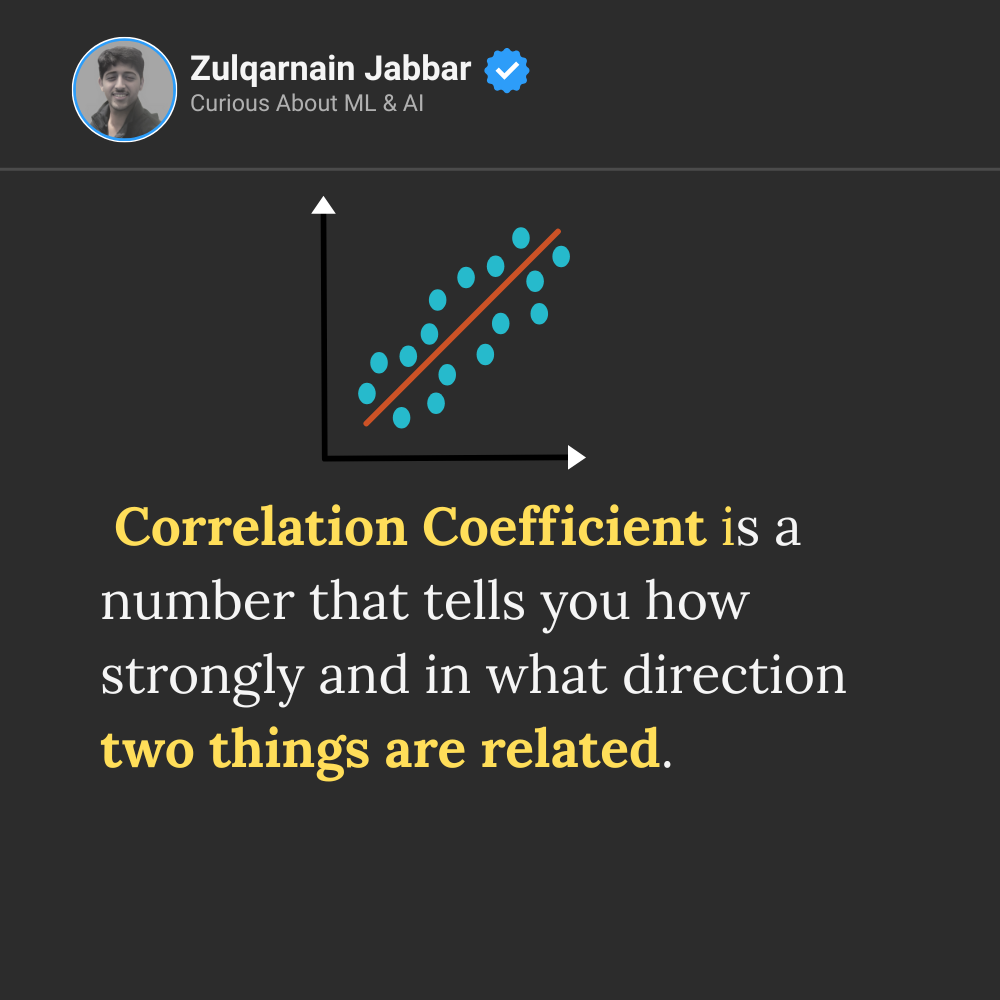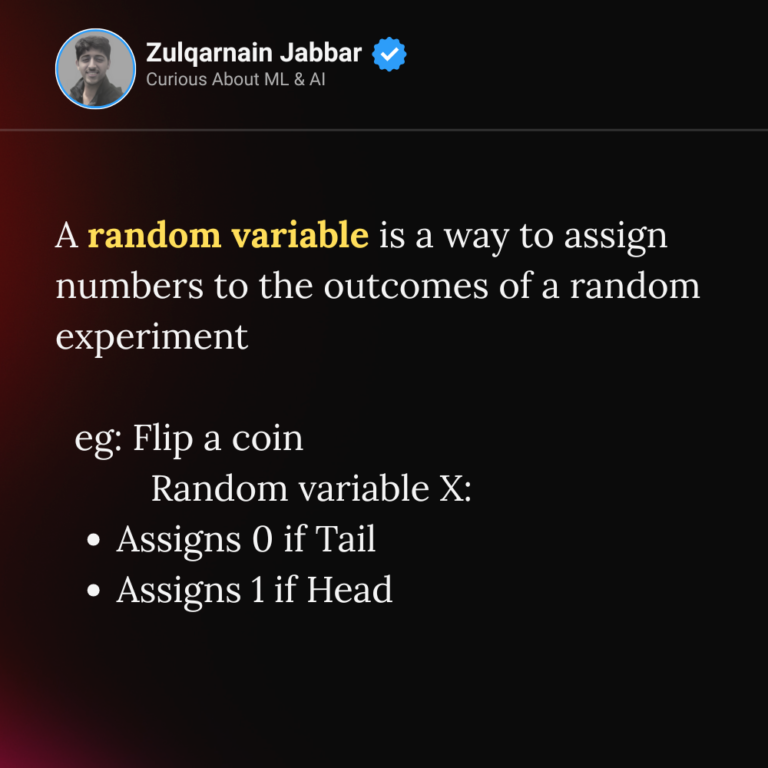Correlation Coefficient

let’s break down correlation coefficient in simple, visual, and intuitive terms 👇
🎯 What is a Correlation Coefficient?
It’s a number that tells you how strongly and in what direction two things are related.
It’s a number that tells you how strongly and in what direction two things are related.
— Zulqarnain Jabbar (@Zulq_ai) April 15, 2025
The correlation coefficient tells you exactly how strong that relationship is — as a number between –1 and +1.#statistics #machinelearning #ai #zulqai pic.twitter.com/K3dDQsEFuB
🧠 Layman Analogy:
Imagine you’re looking at:
- Hours studied vs exam score
If the more someone studies, the higher their score → strong positive relationship
The correlation coefficient tells you exactly how strong that relationship is — as a number between –1 and +1.
📈 What the Numbers Mean:
| Correlation | What it Means | Intuition |
|---|---|---|
| +1 | Perfect positive | As one goes up, the other always goes up (e.g. study more → score more) |
| 0 | No correlation | No connection at all (e.g. shoe size vs intelligence) |
| –1 | Perfect negative | As one goes up, the other always goes down (e.g. more breaks → less productivity, maybe!) |
Other values:
- +0.8 or +0.9 → strong positive relationship
- +0.3 or –0.3 → weak relationship
- Close to 0 → little or no relationship
📦 Real-Life Example:
| Hours Studied | Exam Score |
|---|---|
| 1 | 55 |
| 2 | 60 |
| 4 | 75 |
| 5 | 80 |
✅ These increase together → strong positive correlation → maybe +0.9
🔢 In Python (quick example):
import numpy as np
hours = [1, 2, 4, 5]
scores = [55, 60, 75, 80]
correlation = np.corrcoef(hours, scores)[0, 1]
print("Correlation Coefficient:", correlation)
This gives you the correlation number 🎯
🧭 Final Intuition:
Correlation coefficient = a number that tells you:
- Are two things related?
- If yes, how strongly?
- And in which direction?
It does not mean causation (just because A and B are related doesn’t mean A causes B).


